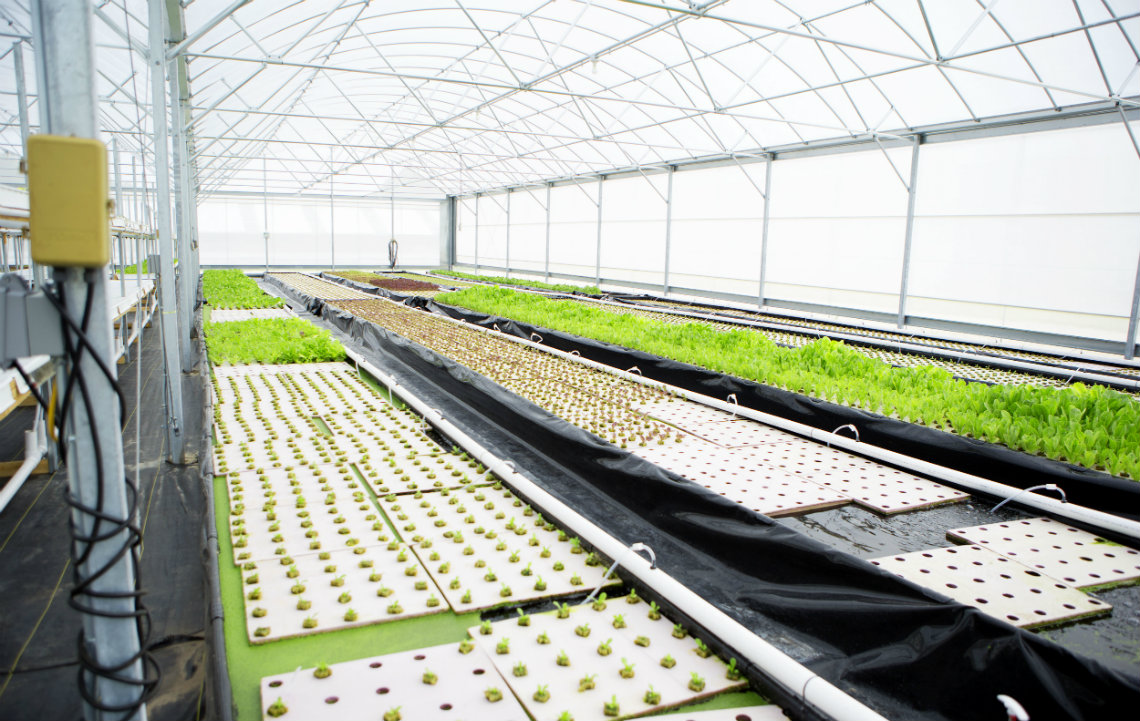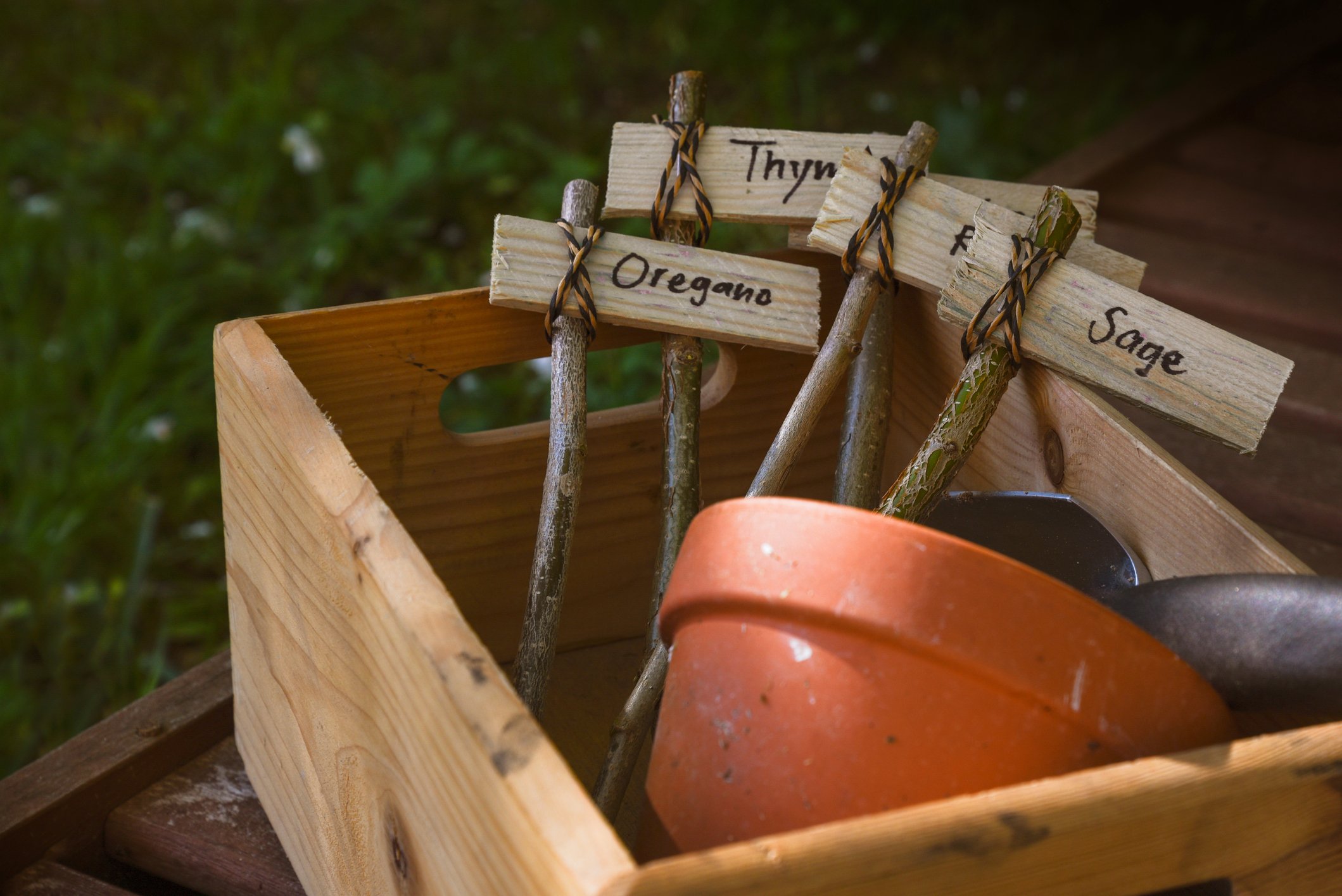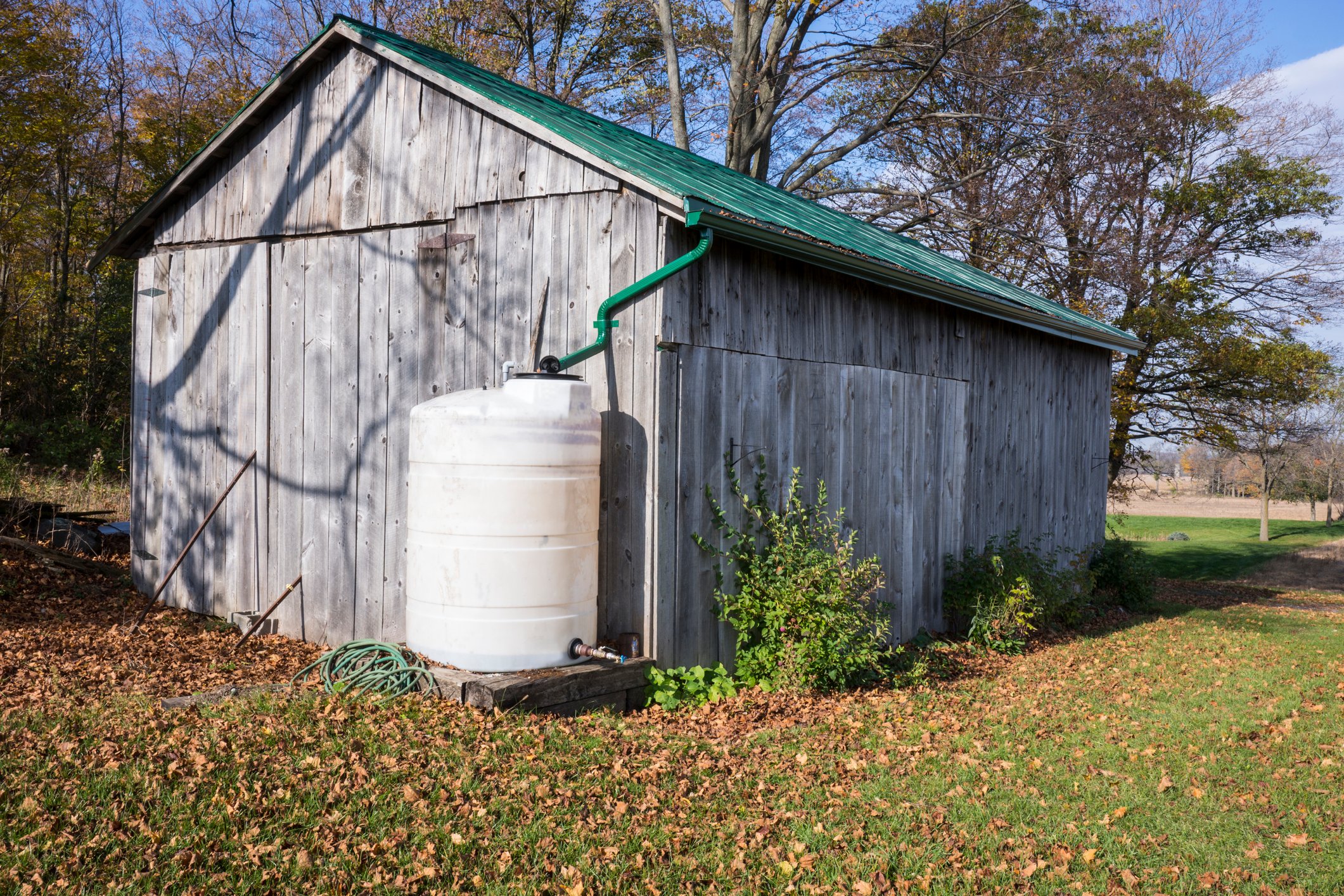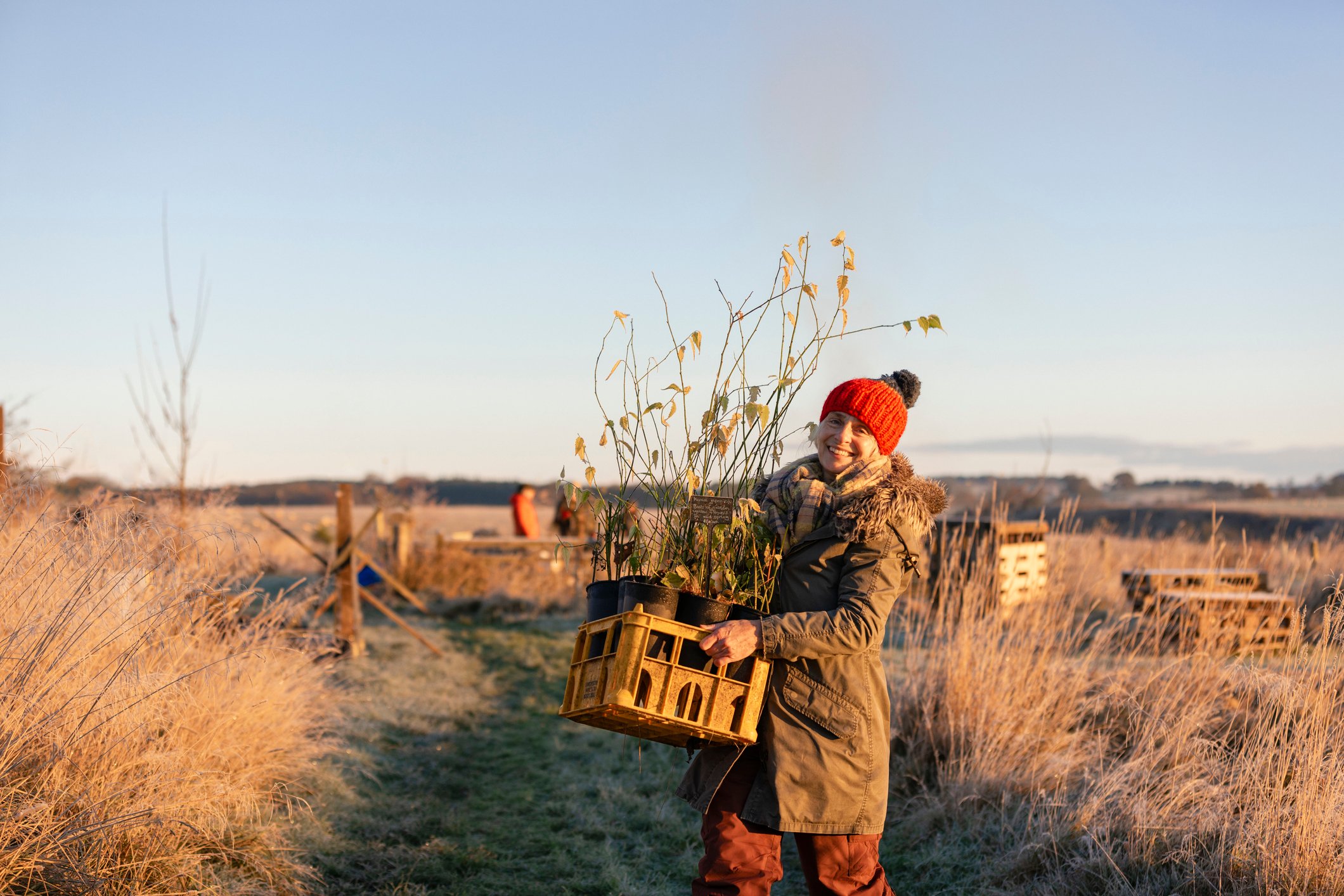The author of The Complete Idiot’s Guide to Aquaponic Farming offers a step by step guide on planning your aquaponics system.
Above: Plantings in various stages at an aquaponics teaching farm in Hilliard, Florida. Read more about Trader's Hill Farm here.
BELTON, TEXAS--Aquaponics is a rising trend that’s making farming possible in entirely new locations on a small amount of land - and many typical setbacks in farming don’t apply.
“You don’t have to worry about drought, storms don’t affect your crops because they’re protected by a greenhouse, and you have a steady stream of water,” said Meg Stout during her presentation, Aquaponics 101 and Future Trends, at the 2016 Mother Earth News Fair in Belton, Texas. Stout is the author of The Complete Idiot’s Guide to Aquaponic Farming.
Aquaponics is a brilliant technique that uses a symbiotic relationship between fish and plants to produce more crops in a fraction of the space a traditional farm would use. Here’s how aquaponics works in a nutshell:
- Fish are raised in low-density tanks in or near a greenhouse where aquaponic crops are growing. The fish add ammonia to the water from their gills and waste.
- The water from the fish tank is fed into a filtration system, removing toxic nitrogen particles while preserving nutrients from the ammonia.
- That nutrient-dense water then feeds crops in a greenhouse where no soil is required, and plants can be placed much closer together than they would be in the ground.
- The crops absorb nutrients from the water and serve as a natural filter, readying the water to return to the fish, where the cycle starts all over again.
Stout took the audience step by step through the requirements for a successful aquaponics operation.
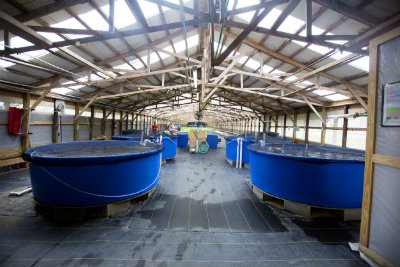 Using the acronym SWANS, she said an aquaponics operation needs:
Using the acronym SWANS, she said an aquaponics operation needs:
- Sun
- Water
- Air
- Nutrients
- Support
How much sunlight is required for aquaponics to be successful?
In order to be successful, aquaponic crops need about 13 hours of light. Research average sunlight in your region. Stout recommended Gaisma.com, a website that offers sunlight data as well as average temperatures for any location in the world.
If you must use artificial lights, she recommended using high intensity discharged light. While there are other options, she said the high intensity lighting will light the crops more evenly and penetrate lower levels of leaves that other lighting methods won’t reach. She recommended talking to a reputable lighting professional when setting up your system.
The fish, however, do better in shade. Stout said fish don’t mind the darkness, and blocking sunlight will help prevent algae from forming in the tank.
What kind of water do you need in aquaponics?
If your area gets enough rainwater, you may be able to harvest all the water you need from the rain. Find out average rainfall for your area to determine whether it would be worthwhile to harvest the rain or whether you need to rely on a well or municipal water.
Whatever water you use, make sure you cover it so harmful materials like bird waste don’t get into the water.
 For the average freshwater fish, the pH level of the water will need to be between 6 and 7. (Note: Saltwater fish are not recommended because most plants do not like saltwater). Having the right pH is so critical for the health of the fish and crops, Stout recommends testing it daily.
For the average freshwater fish, the pH level of the water will need to be between 6 and 7. (Note: Saltwater fish are not recommended because most plants do not like saltwater). Having the right pH is so critical for the health of the fish and crops, Stout recommends testing it daily.
Water temperature will depend on the type of fish and crops you are using the aquaponic system for.
“Cold water holds nutrients better than hot water,” Stout said. “Fish like bluegill can deal with cold water.”
Other fish, like tilapia, fare better in warmer water.
She said to research the best water temperature for both fish and crops and find a breed of fish and type of crop that have similar temperature needs.
She said some systems use a trickle approach, which keeps plants moist rather than immersing them in water. But her research has shown plants are more productive when their root systems are immersed.
Is it necessary to add oxygen to an aquaponic system?
Both the fish and plants need oxygen in the water. The oxygen, in fact, is the reason that plants can survive and thrive while their roots are continuously immersed in water.
Stout said an air pump will take care of the system’s oxygen needs.
“Be very, very careful if somebody tells you you don’t need oxygen. They probably don’t know what they’re talking about,” Stout said.
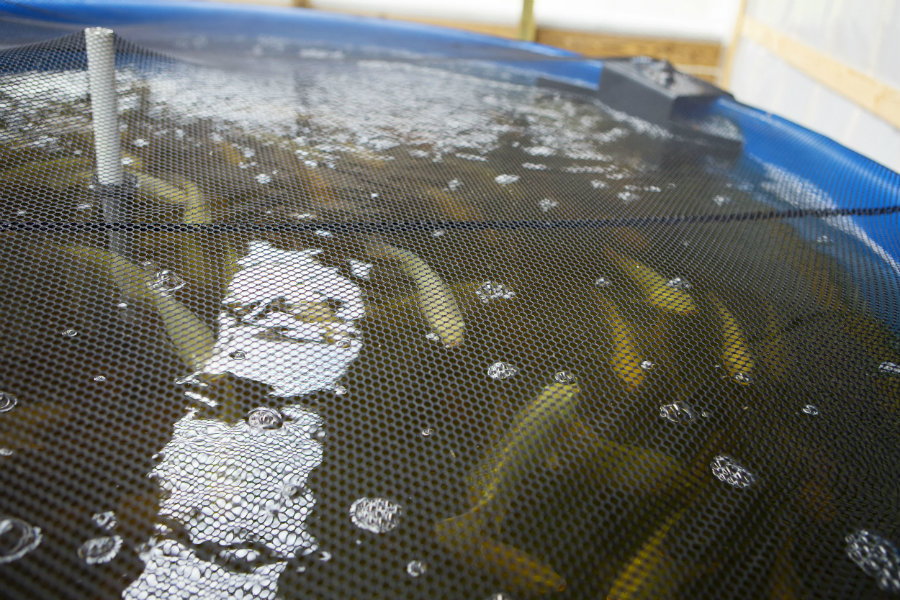
Do I need to add nutrients to an aquaponic system?
Stout said nutrients are required in aquaponics, though in a different way than, say, a hydroponic system (which is basically aquaponics without the fish component). With aquaponics, nutrients should be added continuously to the water, but on a very low (read: affordable) level.
She said iron, potassium and calcium are usually needed. Calcium builds stronger stems in plants and prevents blossom rot. And both potassium and calcium combat acidity, assisting with your pH balancing.
What type of support does an aquaponic system need?
Stout said to use common sense in building an aquaponic system. First and foremost: make sure your water tanks are properly supported.
“A 20 gallon tank weighs as much as a person, so don’t put it on a cheap plastic shelf,” she said. “A 250 gallon tank weighs as much as a car. You wouldn’t park your car on a small wooden deck.”
If you’re growing plants that bear fruit, make sure there is trellising to hold the fruits in place.
And, before you ever buy your fish, find out their dietary needs to ensure you will have access to the right food, and that it’s cost-effective.
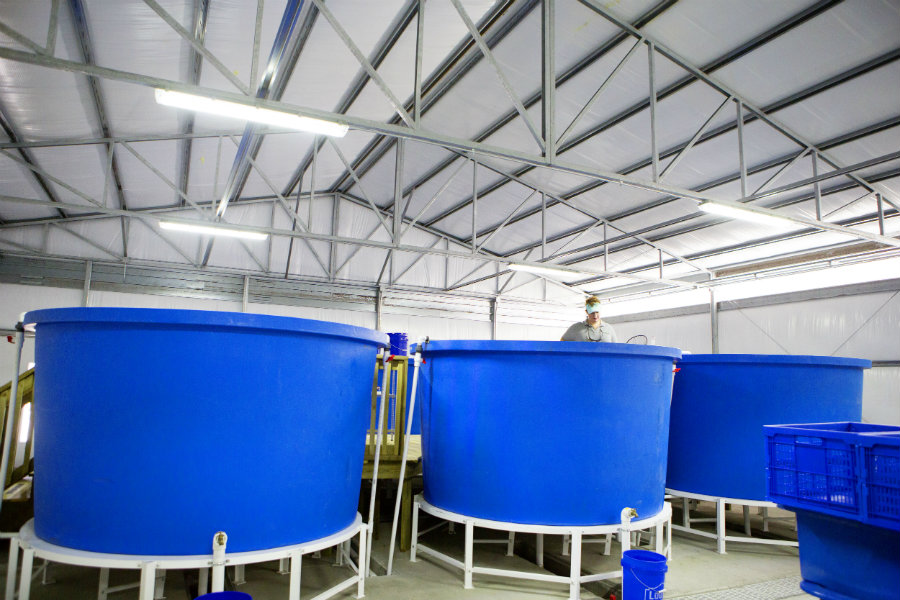 |
| Fish tanks can range from small, 20-gallon tanks to massive 40,000-gallon tanks like these ones at Traders Hill Farms, an aquaponics teaching farm in Hilliard, Florida. |
What type of system is the best for an aquaponics operation?
Plants can be grown in vertical towers, media beds or floating rafts.
While all three have their merits, Stout warned that vertical towers have little backup if the electricity goes out. Media beds have some benefits, supporting plants and doing some filtration. But Stout said the most research has been done on floating rafts, so there is plenty of literature to help someone building a raft system. She said foam rafts are easier to clean and 20 percent more productive than film. A material called Styrene is a popular option, though she warned to avoid the yellow Styrene with a silver lining, as that particular line has an ingredient similar to cyanide in it.
Tanks for the fish can be purchased or built. Any store that has agricultural products, such as Tractor Supply, has stock tanks available to purchase for about $80 to $90, Stout said.
People who make their own use a number of methods. One method is to use fencing material and foam, then put a liner inside.
Fiberglass tanks are more costly, but work very well.
Stout said the most common liner used for the crops’ grow beds is Dura-Skrim.
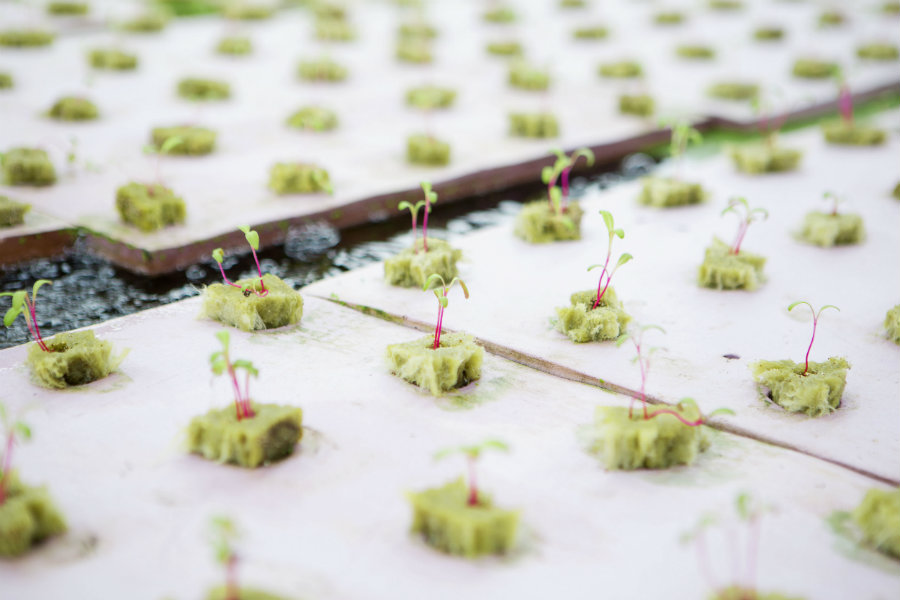
Further reading:
- The Aquaponic Source has a comprehensive article entitled Aquaponic Gardening Rules of Thumb at this link.
- Rethink:Rural visited an aquaponics farm in Hilliard, Florida, that offers apprenticeships to individuals looking to start their own aquaponics operation. See our interview and photos of their system, which uses floating rafts, here.
- Looking for land to start your aquaponics farm on? Take a look at the acreage for sale in Texas here on our parent company's, Raydient Places + Properties', website.
 |
| Who's interested in aquaponics? A ton of people! This is the standing-room-only crowd that gathered to hear Stout's talk about aquaponics at the 2016 Mother Earth News Fair in Belton, Texas. |
You can make sure you don’t miss any of our articles designed to teach you about country life and land buying by subscribing to our newsletter. Sign up at this link, and we’ll send you a monthly roundup of our latest posts.
All aquaponics photos in this article by Bella Blue Photography.


